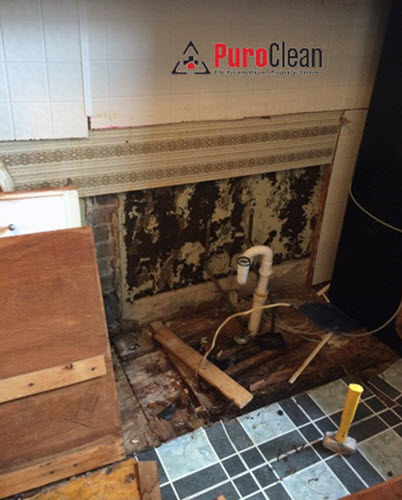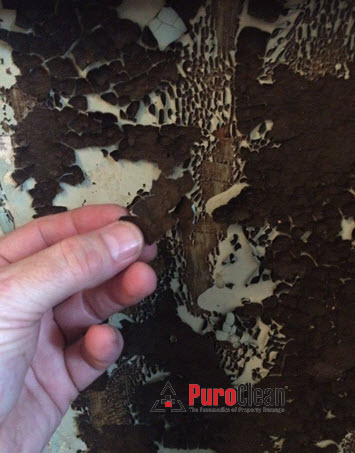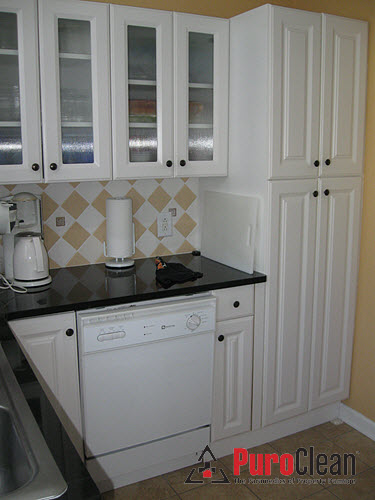[vc_row][vc_column width=”1/2″][vc_column_text]




[/vc_column_text][/vc_column][vc_column width=”1/2″][vc_column_text]
No matter where you live – in Philadelphia or Cherry Hill, the most common cause of kitchen mold is a water leak. Mold can’t grow without water.
Whether you’ve found mold underneath your kitchen sink, inside your pantry or cupboards or behind your refrigerator these all have one common cause: moisture!
So if you’ve found mold anywhere in your kitchen, before you try to clean it, find the source of the water that caused it.
1. If you’ve found mold underneath your kitchen sink, check the supply lines for leaks or bursts. If they seem okay, then check behind your dishwasher.
2. If you’ve found mold in the upper cabinets or pantry, check for leaks in the rooms above your kitchen. Is there a bathroom above it? Check your toilet supply lines, the tub or shower supply, or the sink hoses.
3. If you live in a condominium, a town house or an apartment, your home shares walls with the unit next to it. If you’ve found kitchen mold, the source of the water leak that caused it might be in the wall between you and your neighbors.
If you’ve already inspected all the water supply lines in your own living space and they all seem fine, it’s time to ask your neighbors to check theirs.
So here’s what to do about kitchen mold:
- Replace any rubber hoses with metal-reinforced braided hoses.
- Replace plastic ice-maker supply lines with copper lines.
- Once you’ve done that, it’s time to call the kitchen mold removal experts at PuroClean Emergency Recovery Services!
Unless you call in our IICRC certified firm to inspect the kitchen mold, you won’t know if it’s a problem you can handle for yourself.
The broadest guidelines for safe removal of kitchen mold come from the New York City Department of Health and Mental Hygiene
The criteria in the guidelines for safe kitchen mold removal suggest if the area is smaller than 10 square feet, a homeowner or building manager can remove it.
However, unless you take all the precautions listed in the guideline you run the risk of contaminating your whole home trying to remove it yourself.
In the case of water damage and toxic mold growth, it’s better to be on the safe side and call in the experts.
We’ll remove the kitchen mold and get you clean, dry and sanitized fast with no worries.
For safe, fast, effective kitchen mold removal in the Philadelphia or Cherry Hill area call 877-750-7876
[/vc_column_text][/vc_column][/vc_row][vc_row][vc_column][vc_column_text]
